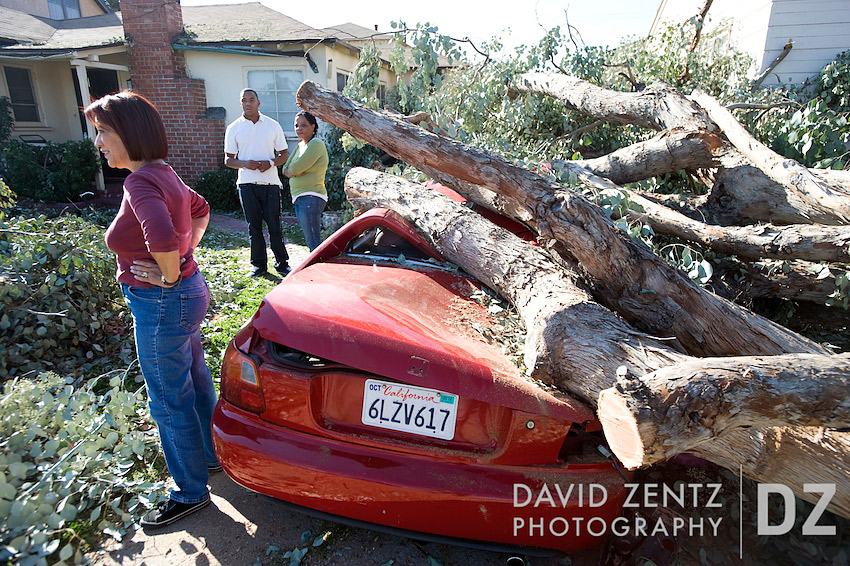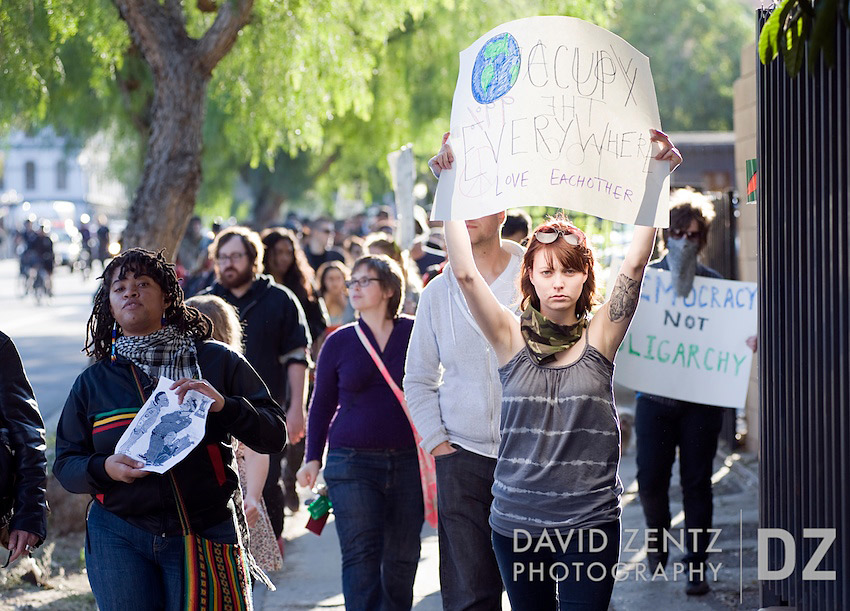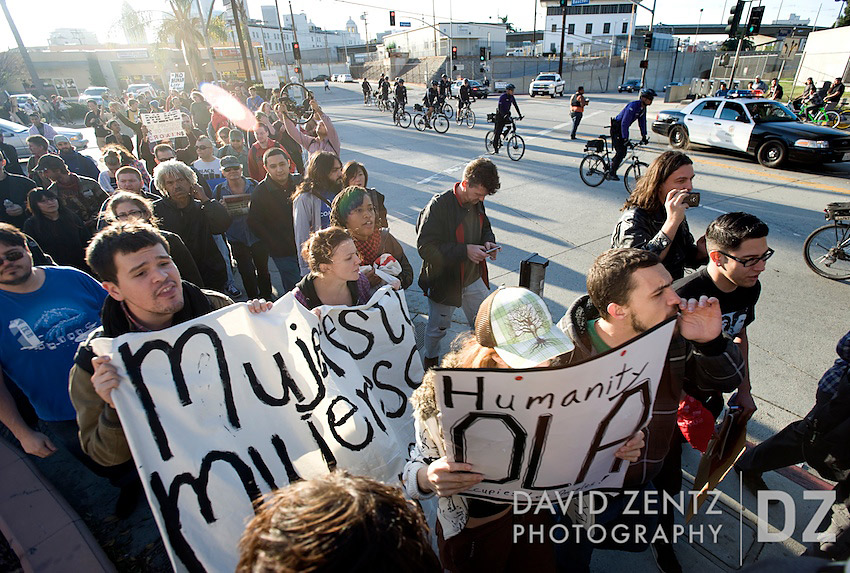



First the preoccupied: Last Saturday had me busy with two assignments for the AP, first doing follow up on Santa Ana winds damage in the formerly tree-lined town of Temple City. Two days prior, winds reaching 150 miles per hour had blown through town causing extensive damage. When I arrived in Temple City it didn’t look all that bad at first. Traffic lights were out along Las Tunas Drive, the town’s main street, causing traffic to move at a slower clip than usual, but other than a few piles of downed branches on the curbside it didn’t seem that bad. It was a different story though when I turned off into the neighborhoods. On the first block to the south large trees still blocked driveways and entire yards were covered with branches. On Live Oak, the next road south, it really looked like a hurricane had come through town. The entire street had been cast in a net of power lines, as one utility pole after another laid outstretched across the road. The power outage was the most pressing problem for the city, as overnight temperatures were dropping unusually low, into the thirties, making life rough for the local residents. Despite some criticism that power wasn’t coming back on fast enough, it was good to see that the power company had deployed additional forces to address the problem. In 2004 I photographed Hurricane Charley, a category 2 storm that tore a new O in Orlando, and remember it took more than eight days in some areas to regain power. This was in August, with temperatures pushing 100 degrees. I remember visiting families who seemed to be melting into their sofas as they sat in the dark, waiting. Here, I believe all power was restored within the week, but understand why people would be impatient. I shot the workers and the downed power lines, walking all the way around the block each time I wanted to move a block east or west since the road was blocked off. After one or two blocks I grew tired of this and was relieved when a postal worker told me about a car that was still crushed beneath a giant tree a couple blocks to the north. (That sounds bad.) What I was hoping to find was an example of how the storm damage had affected someone personally, and this sounded like it might be the thing. The scene he described wasn’t hard to find. It turns out that not only had the tree crushed the one visible car, but there were two cars in front of it that were also trapped, if not destroyed. The red car belonged to the Antjuan Roy, the 20-year-old son of the homeowner, and was his first car, which he’d worked and saved up for. I was told he only had liability insurance, so it was a total loss. Considering the news, they seemed to be taking it well. As I stood there talking to them, passers by slowed their vehicles, jaws slacked, some pausing long enough to shoot a photo with their phone. Theresa, the homeowner, joked that they should put out a can for donations. In the scheme of things they were lucky. The giant tree had somehow managed to fall directly into the one-lane driveway separating their home from their neighbor’s. A couple feet to the right or left and it would have come down on one of their rooftops. But I wished there was something I could do other than try to get the photo published and hope someone would notice.
On to the Occupiers: After filing the images from Temple City I was asked to head downtown where a group of two hundred or so Occupiers had reconvened. This time they were protesting the
continued detention of some of their fellow Occupiers following the Wednesday police raid of their encampment on the lawn of City Hall, where they had been parked for two months. They had begun their march at Pershing Square and were making stops along the way. First was a branch of Bank of America, where someone was apparently arrested for shaking the front door. Moving on, they stopped again near City Hall, where I caught up to them as they started moving again toward their destination, the Los Angeles County Central Jail. In tow were twenty or so police officers on foot, bicycles and in cars. The long chain of protesters wound their way northeast, stopping occasionally on overpasses to chant and wave their signs at passing cars, past the cobblestone paved Olivera Street where vendors stared and smiled. Having jumped into the fray midway, I wasn’t really sure where we were going. I asked a woman who was marching and she didn’t know either. I wondered if she was an exception. The next person I asked knew what was going on and told me we were headed to the Twin Towers, the correctional facility next to the Mens Detention Center. The police mostly kept their distance, only interacting to tell people to get back on the sidewalk if we stepped onto the road. Despite this, they were shouted at and antagonized much of the way. There were some well documented abuses during the Wednesday raid and I can understand the anger, but I also wondered how much they could be expected to take without something inciting action. No action was taken, fortunately, and the group found its way to the jail, where a group of officers from the sheriff’s office stood waiting in brown helmets. Having reached their destination, I departed to file. Now dark, I was asked to go back to the jail to see if anything was still going on, but they had called it a day and dispersed. I decided to do the same.